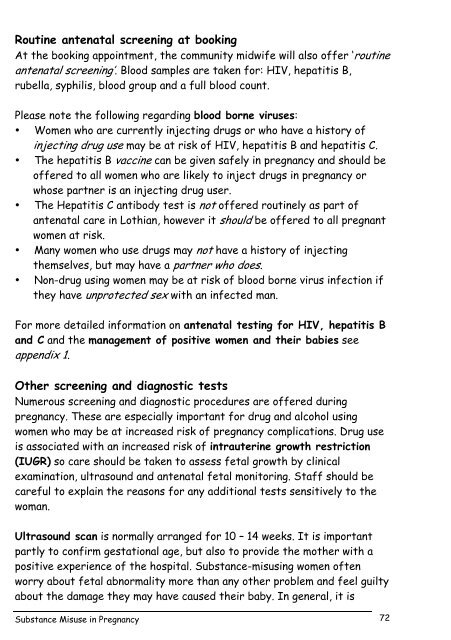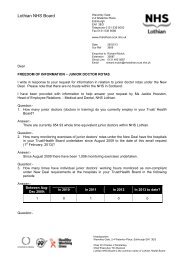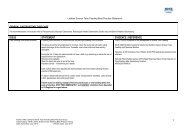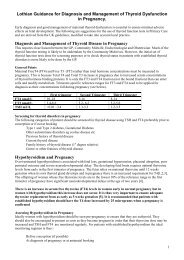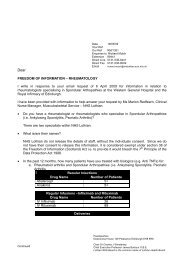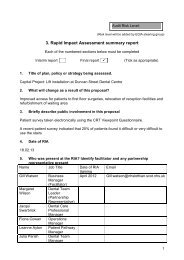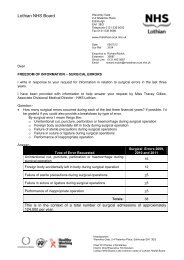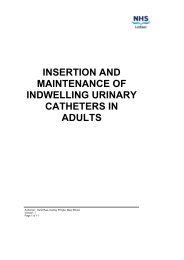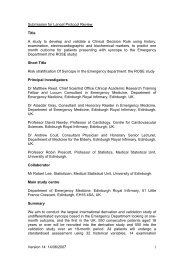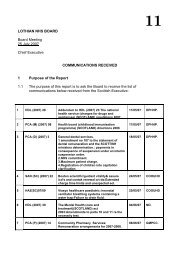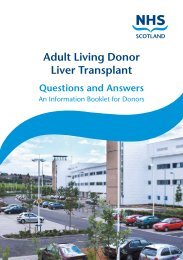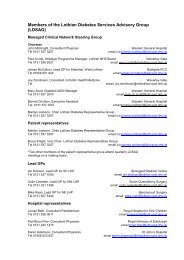Substance Misuse in Pregnancy - NHS Lothian
Substance Misuse in Pregnancy - NHS Lothian
Substance Misuse in Pregnancy - NHS Lothian
You also want an ePaper? Increase the reach of your titles
YUMPU automatically turns print PDFs into web optimized ePapers that Google loves.
Rout<strong>in</strong>e antenatal screen<strong>in</strong>g at book<strong>in</strong>g<br />
At the book<strong>in</strong>g appo<strong>in</strong>tment, the community midwife will also offer ‘rout<strong>in</strong>e<br />
antenatal screen<strong>in</strong>g’. Blood samples are taken for: HIV, hepatitis B,<br />
rubella, syphilis, blood group and a full blood count.<br />
Please note the follow<strong>in</strong>g regard<strong>in</strong>g blood borne viruses:<br />
• Women who are currently <strong>in</strong>ject<strong>in</strong>g drugs or who have a history of<br />
<strong>in</strong>ject<strong>in</strong>g drug use may be at risk of HIV, hepatitis B and hepatitis C.<br />
• The hepatitis B vacc<strong>in</strong>e can be given safely <strong>in</strong> pregnancy and should be<br />
offered to all women who are likely to <strong>in</strong>ject drugs <strong>in</strong> pregnancy or<br />
whose partner is an <strong>in</strong>ject<strong>in</strong>g drug user.<br />
• The Hepatitis C antibody test is not offered rout<strong>in</strong>ely as part of<br />
antenatal care <strong>in</strong> <strong>Lothian</strong>, however it should be offered to all pregnant<br />
women at risk.<br />
• Many women who use drugs may not have a history of <strong>in</strong>ject<strong>in</strong>g<br />
themselves, but may have a partner who does.<br />
• Non-drug us<strong>in</strong>g women may be at risk of blood borne virus <strong>in</strong>fection if<br />
they have unprotected sex with an <strong>in</strong>fected man.<br />
For more detailed <strong>in</strong>formation on antenatal test<strong>in</strong>g for HIV, hepatitis B<br />
and C and the management of positive women and their babies see<br />
appendix 1.<br />
Other screen<strong>in</strong>g and diagnostic tests<br />
Numerous screen<strong>in</strong>g and diagnostic procedures are offered dur<strong>in</strong>g<br />
pregnancy. These are especially important for drug and alcohol us<strong>in</strong>g<br />
women who may be at <strong>in</strong>creased risk of pregnancy complications. Drug use<br />
is associated with an <strong>in</strong>creased risk of <strong>in</strong>trauter<strong>in</strong>e growth restriction<br />
(IUGR) so care should be taken to assess fetal growth by cl<strong>in</strong>ical<br />
exam<strong>in</strong>ation, ultrasound and antenatal fetal monitor<strong>in</strong>g. Staff should be<br />
careful to expla<strong>in</strong> the reasons for any additional tests sensitively to the<br />
woman.<br />
Ultrasound scan is normally arranged for 10 – 14 weeks. It is important<br />
partly to confirm gestational age, but also to provide the mother with a<br />
positive experience of the hospital. <strong>Substance</strong>-misus<strong>in</strong>g women often<br />
worry about fetal abnormality more than any other problem and feel guilty<br />
about the damage they may have caused their baby. In general, it is<br />
<strong>Substance</strong> <strong>Misuse</strong> <strong>in</strong> <strong>Pregnancy</strong><br />
72


